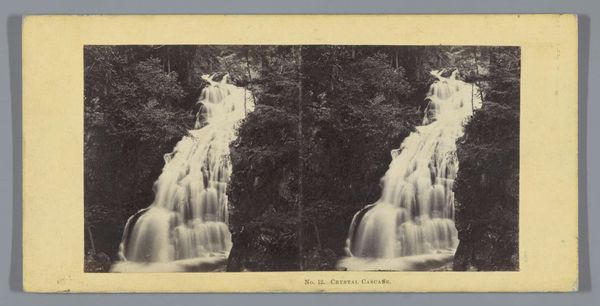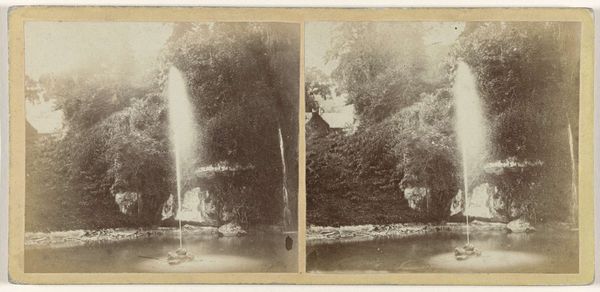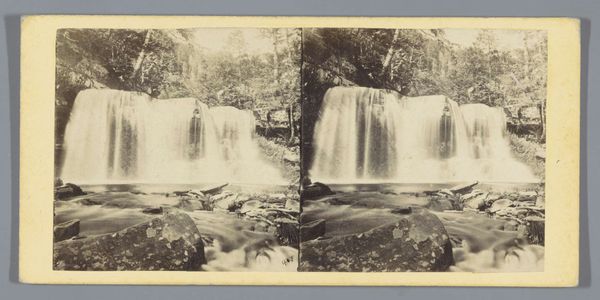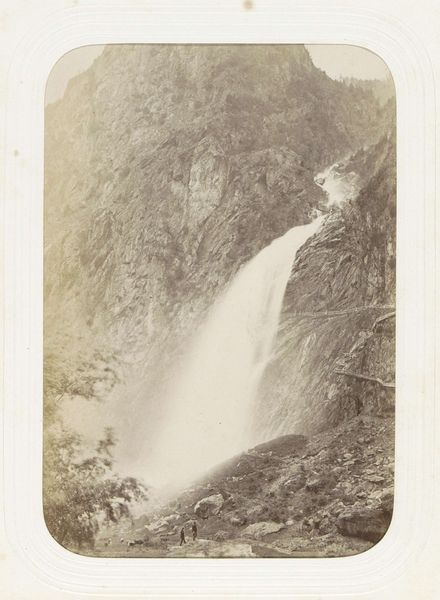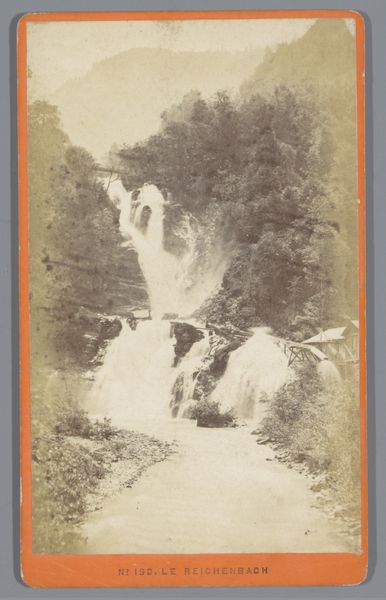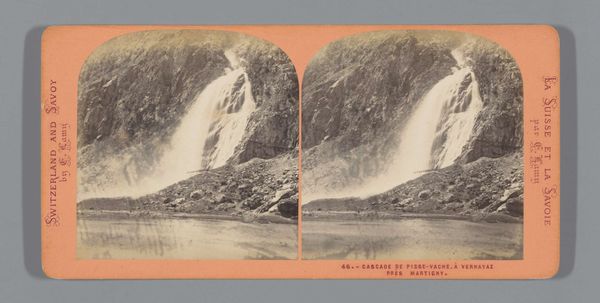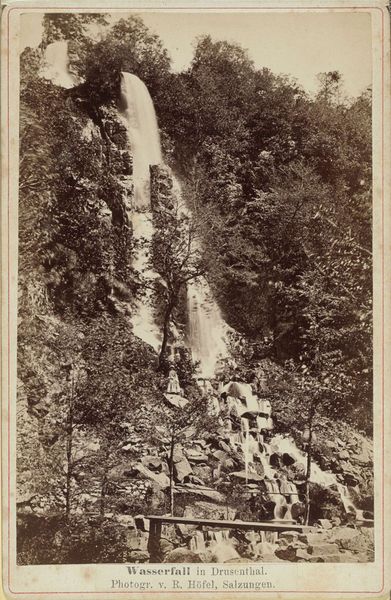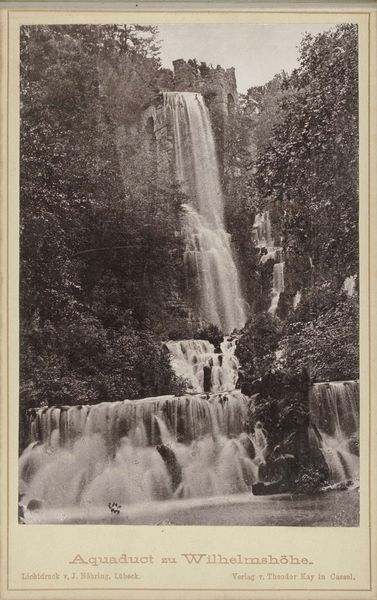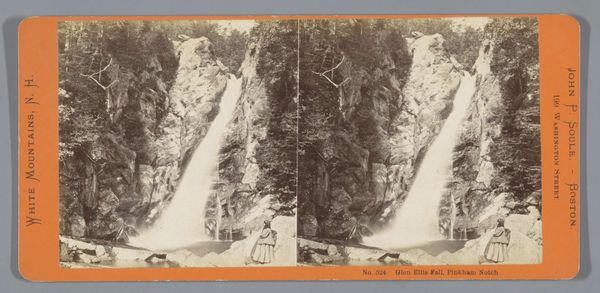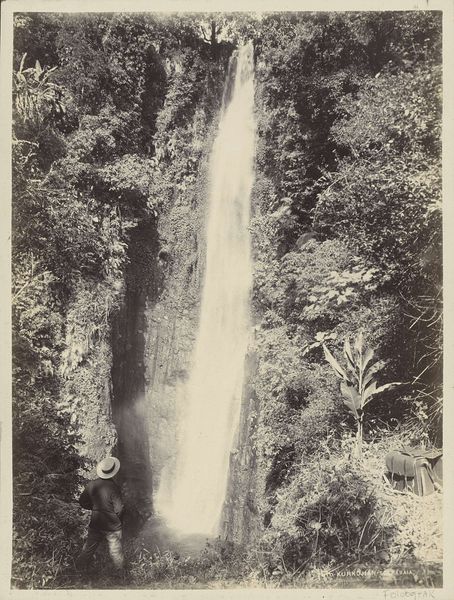
Dimensions: height 87 mm, width 177 mm
Copyright: Rijks Museum: Open Domain
Curator: Here we have "Trusetaler waterval nabij Herges-Vogtei," a photograph by Hermann Selle, dating roughly between 1868 and 1890. Editor: My first impression is a feeling of subdued awe. It captures the dramatic presence of the waterfall yet somehow softens it. A calming melancholy settles over the scene. Curator: Given the period, the subdued tone is somewhat inherent to the daguerreotype process. Selle masterfully harnessed this, transforming the waterfall into more than just a subject. Water, across cultures, is rife with symbolism—renewal, purity, even the unconscious. It's compelling how a photographic rendering enhances, rather than diminishes, that mystique. Editor: Absolutely, but consider the physical making. Daguerreotypes involve meticulously coating a silvered copper plate and exposing it to fumes, followed by a prolonged exposure time in the camera. The final image's tonal range directly correlates to these precise chemical and manual interventions, it’s hardly a click and capture. It signifies labor, skill and time. Curator: I agree. And perhaps the extended exposure also affects our reading—giving this single moment, or at least the *illusion* of a captured instant, a patina of timelessness. Beyond the immediate subject of a waterfall, this scene reverberates within Romantic ideals; sublime natural beauty tames the human heart. Editor: Though the "natural" elements are still subject to social interpretation; photography's explosion depended upon material availability, specialized labor, distribution networks – the image’s romantic essence comes packaged within a manufactured frame. Curator: Well, without such processes, we might never have known of this waterfall. Every form, in art, inevitably stems from materials transformed through a means of production. But perhaps seeing is believing…or perhaps seeing creates believing? Editor: Indeed. Perhaps a beautiful lie is more powerful because its origins are hidden beneath the cascade of water and time.
Comments
No comments
Be the first to comment and join the conversation on the ultimate creative platform.
